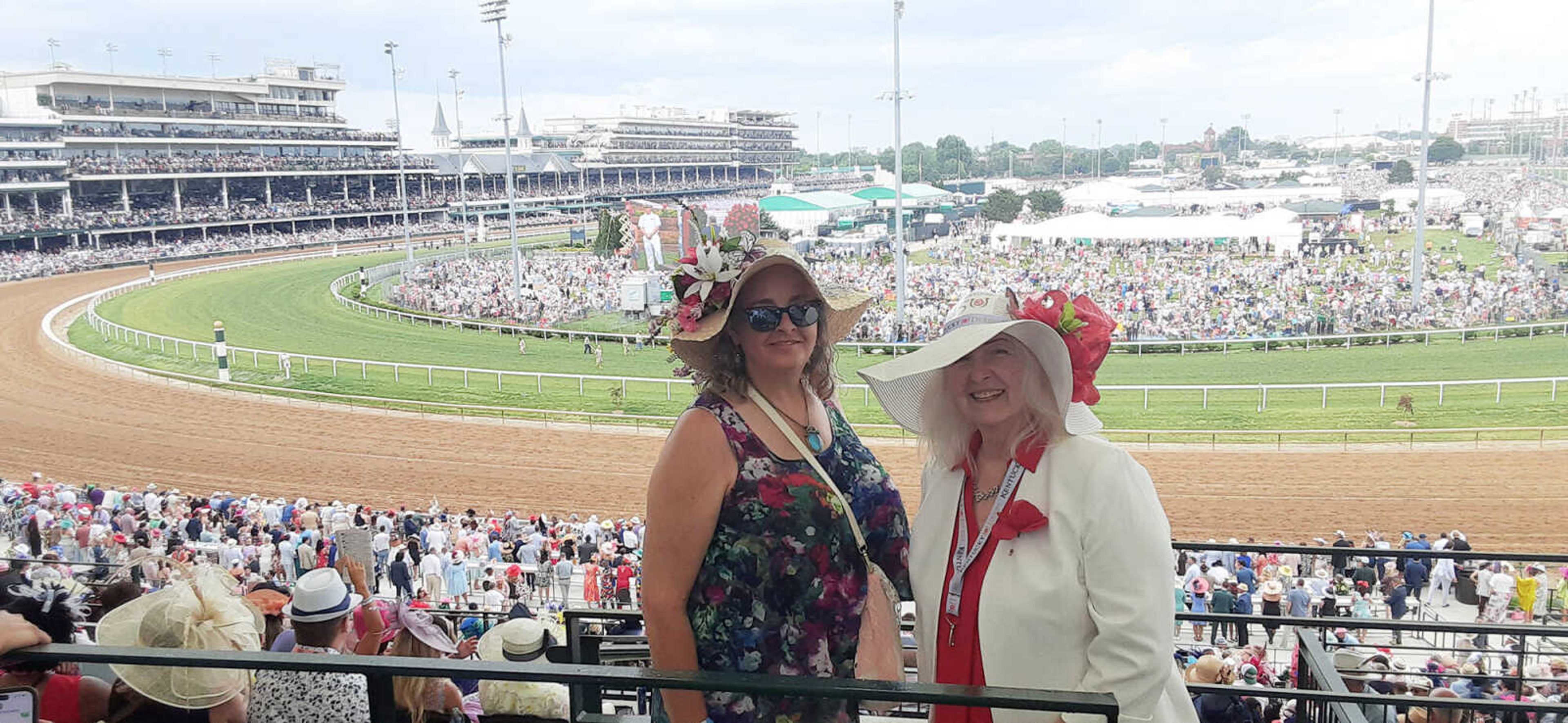Greystone: Legacy Lost?
Our city is one that has its own unique charm: a scenic river town with rolling hills and limestone bluffs; amidst the landscape are fine, distinguished buildings from a wide range of historical eras and architectural styles. Greystone, c. 1921, built and once owned by J. W. Gerhardt, is one such building, and is on the verge of--or perhaps already is--being demolished by SEMO University (the other being the Ochs-Shivelbine home, built by Theodore Ochs--the man who started Pioneer Orchards)...
Our city is one that has its own unique charm: a scenic river town with rolling hills and limestone bluffs; amidst the landscape are fine, distinguished buildings from a wide range of historical eras and architectural styles. Greystone, c. 1921, built and once owned by J. W. Gerhardt, is one such building, and is on the verge of--or perhaps already is--being demolished by SEMO University (the other being the Ochs-Shivelbine home, built by Theodore Ochs--the man who started Pioneer Orchards).
Julius William Gerhardt, born on March 1, 1886 in Old Appleton, MO, received only a third grade education, yet was a self-made man and undoubtedly one of--if not the best--contractors this region has ever known. His early years as a builder and contractor was during one of Cape Girardeau's strongest periods of population and financial growth--from 1910 through the 1920's. The Gerhardt Construction Co., headed by J. W., built and remodeled homes, schools, churches and other buildings in the area until the 1970's--over sixty years and over 3000 buildings; a remarkable achievement! The following information was gathered from numerous sources, including the Southeast Missourian's Out of the Past feature, the f/8 and Be There blog (thank you, Sharon Sanders and Fred Lynch) and the "Images of the Past in the City of Roses" book; presented here is a partial list of J. W.'s buildings in Cape (and construction years, if available), many of which still exist today:
* J. W.'s personal homes in Cape Girardeau: Beaudean Lane, c. 1910; N. West. End Blvd. c. 1916; Greystone, c. 1921; Flint Hill, c. 1927; Casa Pequena, additions and remodeling c. 1965 -- 1979. His home in Old Appleton, MO: Apple Creek Lodge (Riviere de la Pomme), c. 1953
* The Hirsch Building, S. Sprigg and Good Hope, c. 1912
* Centenary Methodist Church, N. Ellis St., c. 1914
* Buckner -- Ragsdale Co. Building, N. Main. St., c. 1916
* Frisco Railroad Depot, S. Main St., c. 1921; demolished 1960
* SEMO: The Rosemary Berkel Crisp School of Nursing (formerly SEMO's Training School and University High); N. Pacific, c. 1923
* The Missourian Building, Broadway, c. 1925
* The Hecht Building, N. Main Street. c. 1927
* Southeast Hospital (he assisted his brother, A. H. Gerhardt), Lacey St., 1928; additions, c. 1957 and 1966 by J. W. Gerhardt
* The Hotel Marquette, (he assisted his brother, A. H. Gerhardt), Broadway, c. 1928; 40 room annex, c.1936 by J. W. Gerhardt
* The Alvarado Service Station and Cafe, Highway 61 and Broadway,
c. 1929, demolished 1971
* The Southeast Missouri Telephone Co., Broadway, c. 1930
* The Rialto Theatre, Broadway, c. 1940
* The Esquire Theatre, Broadway, c. 1947
* SEMO: Magill Hall of Science Building, c. 1958
* Schools: May Greene, c. 1920, Central Junior High (formerly Central High), c. 1953, Jefferson Elementary, c. 1957, and Clippard (formerly Hawthorne), Hopper Rd., c. 1959-60
* Federal Building, Broadway, c. 1968
J. W. also signed a petition and worked towards creating the park at Cape Rock and the Country Club in 1921, was selected president of the Cape Girardeau Humane Society in 1952, designed the plan for the Capaha Park Rose Garden, c. 1955, shared the expense of repairing the Civil War Memorial Fountain, worked to place a lattice design on top of the pillars of the Old Courthouse Bandstand, and erected the Old Courthouse Museum--all in 1961, landscaped the Glenn House grounds in 1971, and directed the reconstruction of the old McKendree Chapel in 1977. In addition to building homes for many citizens in the region, he built more than 20 depots for the Frisco Railroad, 64 buildings for the Bell Telephone Company and over 40 buildings for AT&T in Missouri, Illinois, Tennessee, Kentucky, Iowa, Kansas, Arkansas, Mississippi, Oklahoma and Texas. He was also an archeologist who collected, studied and wrote about Native American artifacts; he was an avid horticulturalist and naturally gifted landscape architect. Clearly, he was a man of many talents, interests and achievements; our very own Leonardo da Vinci, if you will.
Greystone and its 13 acres was built during the beginning of the roaring 20's; this most elegant of Mr. Gerhardt's homes reflects the era in which it was conceived and created. It housed this illustrious man, his loving wife and seven children in comfort and style; it had tennis courts, miniature golf and a swimming pool for his family and friends to enjoy. It was used as a country club when the Gerhardts fell on hard times during the depression; it hosted many celebrations and people embraced its setting for local bands like the Blue Rhythm Boys before it was ultimately sold. It represents a time of affluence and self-confidence, with just rewards for hard work and an unwavering belief in the American dream. What a shame for the city of Cape Girardeau to lose this part of its history and heritage.
Connect with the Southeast Missourian Newsroom:
For corrections to this story or other insights for the editor, click here. To submit a letter to the editor, click here. To learn about the Southeast Missourian’s AI Policy, click here.










